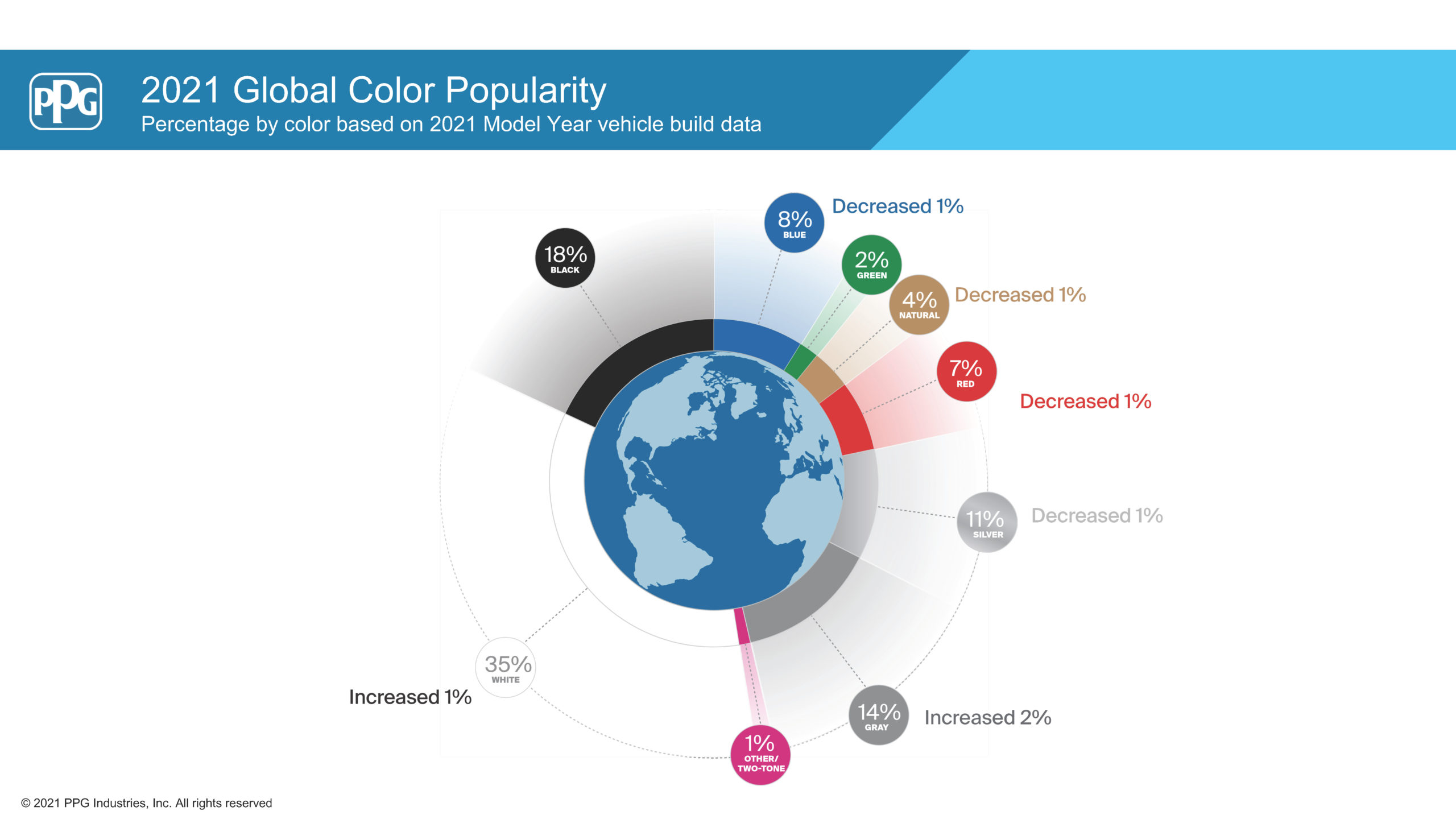PPG Released Its 2021 Automotive Color Report \ PPG Report Shows Two-tone Finishes, Personalization Gaining Favor Among Car Buyers
The company's 2021 automotive color report focuses on societal trends, holistic color styling, and sustainable application technologies.
PPG has released its 2021 automotive color popularity report, which shows that two-tone finishes, personalized colors, and other emerging trends are becoming more popular among car buyers.
Consumers' desire for personalization is reflected in the rise of two-tone finishes. Color science and application technology advancements have made it possible to bring these styling options to the masses in a more practical and sustainable way.
“It’s fitting that two-tone finishes would come back into favor during this time when we as a society are looking to the past,” said Misty Yeomans, PPG color styling manager, automotive OEM, Americas. “Along with special-order colors, tinted clearcoats, tri-coats and matte finishes, two-tone finishes better reflect vehicle owners’ individual preferences and personalities.”
Although two-tone finishes were popular in the 1950s and 1960s, they became increasingly impractical in mass production environments due to traditional color development and application processes. The traditional method for achieving a two-tone finish necessitates labor-intensive vehicle body masking and multiple paint shop runs. PPG has assisted global OEMs in overcoming this challenge by developing a groundbreaking application technology that produces crisp paint edges without the use of masking or other time-consuming steps.
The precision application process developed by PPG can cut paint shop application time by 50 minutes per two-tone vehicle. It helps customers achieve their sustainability goals by lowering CO2 emissions and removing the need for energy-intensive air-filtering systems to deal with overspray. Color personalization is also made possible by PPG's digital color styling advancements, which dramatically reduce the time it takes to bring new colors to market.
Grays, blues, greens, and violets are becoming more popular, according to the PPG report, with vibrant new colors more likely to debut on sporty models rather than SUVs and pickups.
[caption id="attachment_135045" align="aligncenter" width="2560"]

PPG releases its 2021 automotive color report, which highlights emerging trends influenced by societal changes, holistic color styling and sustainable application technologies. (Graphic: Business Wire)[/caption]
Green Gives Confidence
Green is still popular around the world because of its connection to nature, sustainability, and inclusiveness. For the automotive industry, this will continue to be a crucial color space.
“Green is also seen as a ’traffic light’ color, acting as a signal for everyone to go forward – it's safe and we can trust this color,” Yeomans said. “Green has two directions. One is sporty, fresh and vivid. The other is organic and darker, with deeper tones developed or designed as dark luxury greens yet still with a sporty and fresh attitude.”
White (35 percent of vehicle builds) and black (18 percent) continue to be the most popular colors among car buyers worldwide, while gray demand has increased by 2% in each of the last two years. Blues are still strong at 8%, while reds have dropped to 7% of builds. A 1.5 percent drop in North American consumers was the driving force behind this.
PPG also sees increased emphasis on taking a holistic approach to vehicle styling.
“We consider all surfaces and features of the vehicle as part of our color styling process,” said Yeomans. “As one example, we’re seeing increased use of specialized wheel coatings and colors to complement the styling cues of the vehicle body.”
PPG's unique position as a global color leader allows it to spot and interpret emerging color trends for customers' applications ranging from consumer goods to automotive color and residential to commercial and industrial design. PPG color experts use this fact-based approach to help customers come up with color ideas based on cultural and demographic trends. Color technologies developed as a result coat a wide range of materials and surfaces, shorten development cycles, and speed up the introduction of more desirable and better-looking products to market.
Note: Content may be edited for style and length.
Reference

 PPG releases its 2021 automotive color report, which highlights emerging trends influenced by societal changes, holistic color styling and sustainable application technologies. (Graphic: Business Wire)[/caption]
PPG releases its 2021 automotive color report, which highlights emerging trends influenced by societal changes, holistic color styling and sustainable application technologies. (Graphic: Business Wire)[/caption]